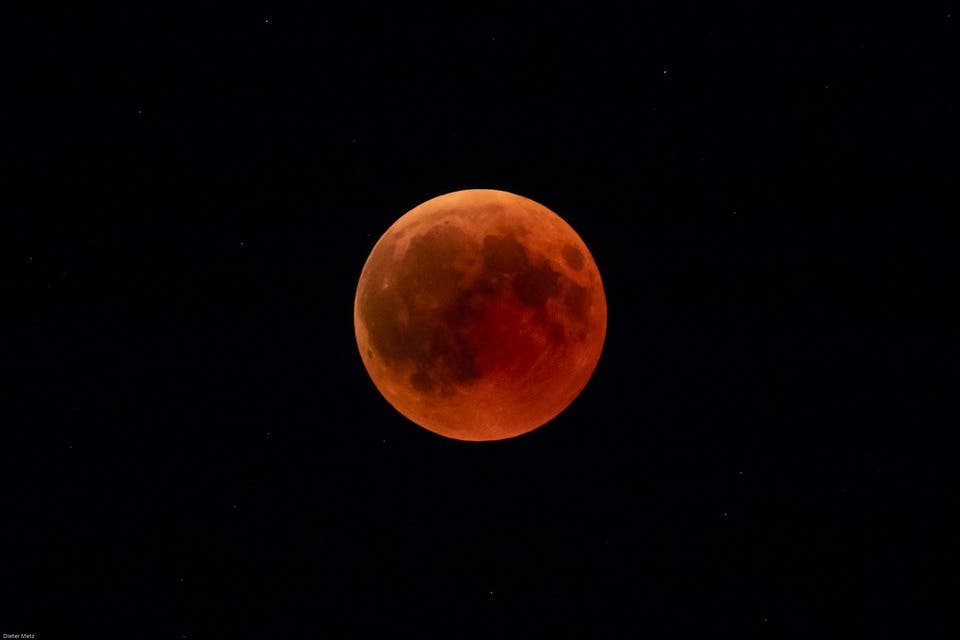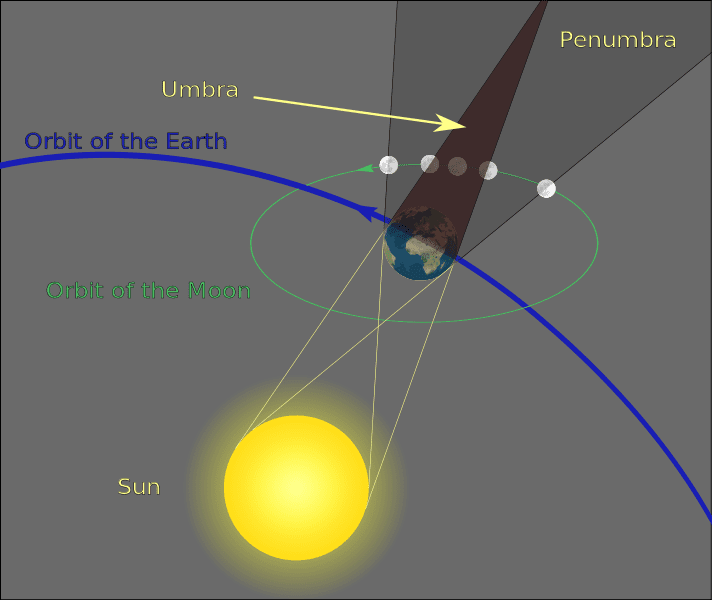When the Moon turns bloody, it’s Earth at work.

Humanity has always kept an eye on the heavens. Societies lived and died by natural cycles, and these orbs in the sky seemed to dictate the rhythm of life — so they imposed themselves as central players in our mythoi. The imprint they left on our psyche is so deep that to this day, we still name heavenly bodies after gods.
But two players always commanded center stage: the Sun and the Moon. One interaction between the two is so particularly striking that virtually all cultures regarded it as a sign of great upheaval: the blood moon. Its perceived meaning ranges from the benign to the malevolent. Blood moons drip with cultural significance, and we’ll explore some of it because I’m a huge anthropology nerd.
But they’re also very interesting events from a scientific point of view, and we’ll start with that. What, exactly, turns the heavenly wheel of cheese into a bloody pool? Well, let me whet your appetite by saying that it’s the same process which produces clear blue skies. Ready? Ok, let’s go.
The background

Image credits Sagredo / Wikimedia.
For context’s sake, let’s start by establishing that the moon doesn’t shine by itself. It’s visible because it acts as a huge mirror, beaming reflected sunlight down at night. During a total lunar eclipse, the Earth passes between the Sun and the Moon, blocking sunlight from hitting its surface. Blood moons happen during such lunar eclipses. A sliver of light is refracted (bent) in the atmosphere, passing around the Earth and illuminating the Moon. This is what gives it that reddish colo
It all comes down to how light interacts with our planet’s atmosphere, most notably a process called Rayleigh scattering: electromagnetic radiation interacts with physical particles much smaller in size than the radiation’s wavelength.
For context’s sake part deux, what our eyes perceive as white light is actually a mix of all the colors we can see. Each color is generated by a particular wavelength interval (more here).
Boiled down, different bits of light get more or less scattered depending on their wavelength. It’s quite potent: roughly a quarter of the light incoming from the Sun gets scattered — depending on fluctuating atmospheric properties such amount of particles floating around in it — and some two-thirds of this light reaches the surface as diffuse sky radiation.
The Blood Moon
As a rule of thumb, our atmosphere is better at scattering short wavelengths (violets and blues) than long wavelengths (oranges and reds). ‘Scattering’ basically means ‘spreading around’, and this makes the sky look blue for most of the day. This scattering is not dependent on direction (or, in fancy-science-speak, it’s an isotropic property) but its perceived effect is.
When the sun is high in the sky, light falls roughly vertically on our planet; as such, it passes through a relatively short span of the atmosphere. Let’s denote this rough length with ‘a‘.
The light of dawn and dusk arrives tangentially (horizontally) to the planet. It thus has to pass through a much longer span of the atmosphere than it does at noon. Blues become scattered just like in the previous case as light traverses this a distance through the atmosphere. But it then has to pass through yet more air. So greens (the next-shortest wavelengths) also become dispersed. That’s why the sky on dawn or sunsets appear red or yellow (the remaining wavelengths).
The same mechanism is at work during a blood moon. Light passing through the Earth’s atmosphere gets depleted in short wavelengths, making it look yellowy-red. This makes the Moon appear red as it reflects red light back to our eyes.
One cool effect of this dispersion is that blood moons sometimes exhibit a blue-turquoise band of color at the beginning and just before the end of the eclipse. This is produced by the light that passes through the ozone layer in the top-most atmosphere. Ozone scatters primarily red light, leaving blues mostly intact.
The #SuperBlueBloodMoon eclipse as seen from Choa Chu Kang (Photos: David Wirawan) https://t.co/zhPSRyE9Ph pic.twitter.com/H5zAfM67QD
— CNA (@ChannelNewsAsia) January 31, 2018
Cultural meanings
Many ancient civilizations looked upon the blood moon with concern: in their eyes, this was an omen that evil was stirring.
“The ancient Inca people interpreted the deep red colouring as a jaguar attacking and eating the moon,” Daniel Brown wrote for The Conversation. “They believed that the jaguar might then turn its attention to Earth, so the people would shout, shake their spears and make their dogs bark and howl, hoping to make enough noise to drive the jaguar away.”
Some Hindu traditions hold that the Moon turns red because of an epic clash between deities. The demon Swarbhanu tricks the Sun and Moon for a sip of the elixir of immortality. As punishment Vishnu (the primary god of Hinduism) cuts off the demon’s head — which lives on as Rahu.
Understandably upset by the whole experience, Rahu chases the sun and moon to devour them. An eclipse only happens if Rahu manages to catch one of the two. Blood Moons form when Rahu swallows the moon and it falls out of his severed neck. Several things, such as eating or worshiping, are prohibited, as Hindu traditions hold that evil entities are about during an eclipse.
Other cultures took a more compassionate view of the eclipsed moon. The Native American Hupa and Luiseño tribes from California, Brown explains, thought it was wounded or fell ill during such an event. In order to help its wives in healing the darkened moon, the Luiseño would sing and chant healing songs under an open sky.
My personal favorite, however, is the approach of the Batammaliba people, who live in the nations of Togo and Benin in Africa. Their traditions hold that the lunar eclipse is a conflict between sun and moon; we little people must encourage them to bury the hatchet! Such events are thus seen as an opportunity to lay old animosities and feuds to rest;
I’m definitely going to try that during the next blood moon.







